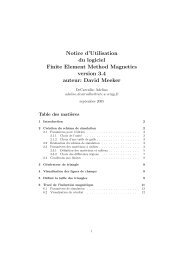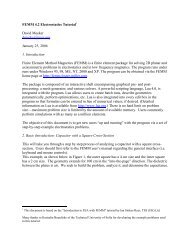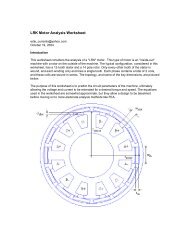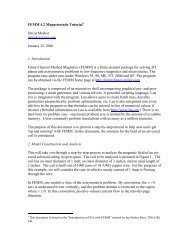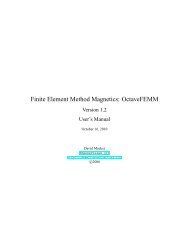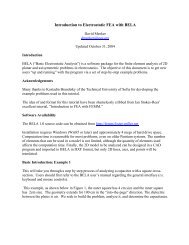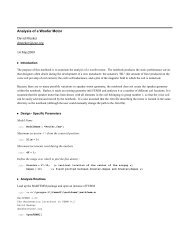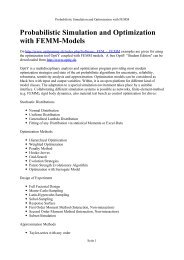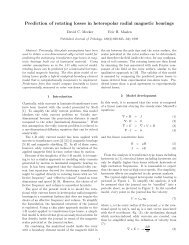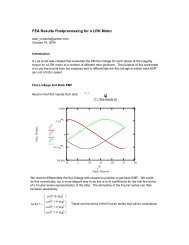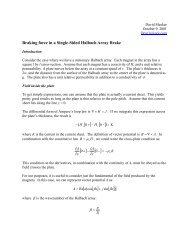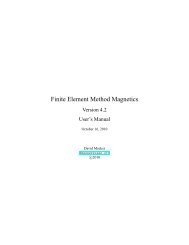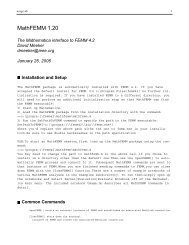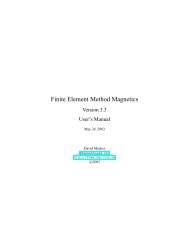1 Introduction - Finite Element Method Magnetics
1 Introduction - Finite Element Method Magnetics
1 Introduction - Finite Element Method Magnetics
You also want an ePaper? Increase the reach of your titles
YUMPU automatically turns print PDFs into web optimized ePapers that Google loves.
If ”parallel” is selected, the current is split between all regions marked with that circuit property<br />
on the basis of impedance ( current is split such that the voltage drop is the same across all sections<br />
connected in parallel). Only solid conductors can be connected in parallel.<br />
If ”series” is selected, the specified current is applied to each block labeled with that circuit<br />
property. In addition, blocks that are labeled with a series circuit property can also be assigned a<br />
number of turns, such that the region is treated as a stranded conductor in which the total current is<br />
the series circuit current times the number of turns in the region. The number of turns for a region<br />
is prescribed as a block label property for the region of interest. All stranded coils must be defined<br />
as series-connected (because each turn is connected together with the other turns in series). Note<br />
that the number of turns assigned to a block label can be either a positive or a negative number. The<br />
sign on the number of turns indicated the direction of current flow associated with a positive-valued<br />
circuit current.<br />
For magnetostatic problems, one could alternatively apply a source current density over the<br />
conductor of interest and achieve similar results. For eddy current problems, however, the “circuit”<br />
properties are much more useful–they allow the user to define the current directly, and they allow<br />
the user to assign a particular connectivity to various regions of the geometry. This information is<br />
used to obtain impedance, flux linkage, etc., in a relatively painless way in the postprocessor.<br />
By applying circuit properties, one can also enforce connectivity in eddy current problems.<br />
By default, all objects in eddy current problems are “shorted together at infinity”–that is, there<br />
is nothing to stop induced currents from returning in other sections of the domain that might not<br />
be intended to be physically connected. By applying a parallel-connected circuit with a zero net<br />
current density constraint to each physical “part” in the geometry, the connectivity of each part is<br />
enforced and all is forced to be conserved inside the part of interest.<br />
The dialog for entering circuit properties is pictured in Figure 15.<br />
3.8 Exterior Region<br />
Figure 15: Circuit Property dialog<br />
One often desires to solve problems on an unbounded domain. Appendix A.3.3 describes an easyto-implement<br />
conformal mapping method for representing an unbounded domain in a 2D planar<br />
finite element analysis. Essentially, one models two disks–one represents the solution region of<br />
26



